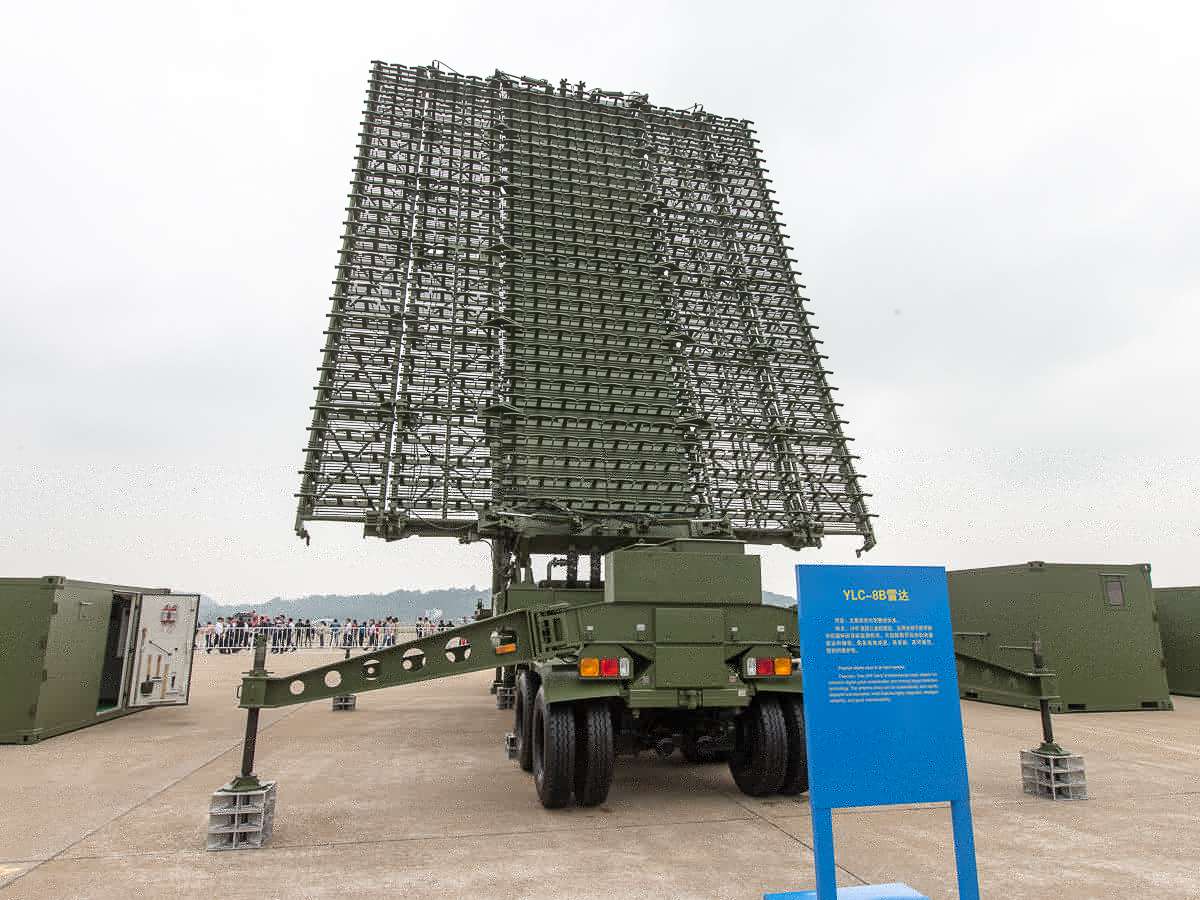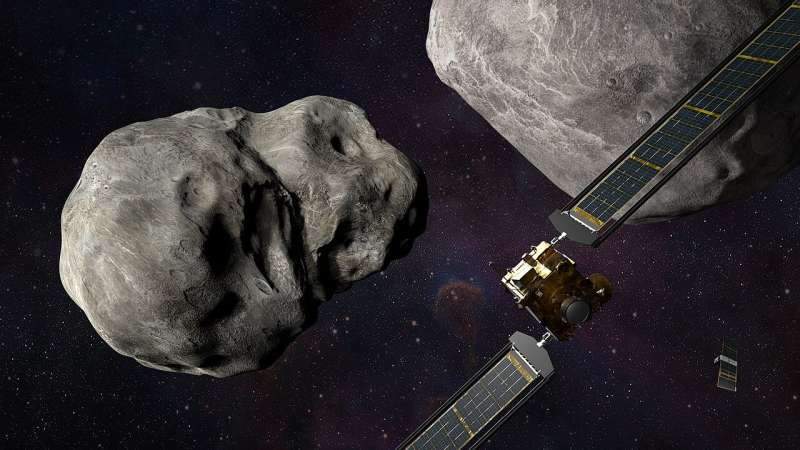China recently began building what it claimed to be the most far-reaching radar system in the world to improve its defense capability against near-Earth asteroids and its sensing capability for the Earth-Moon system.
A new high-definition deep-space active observation facility, codenamed China Fuyan [facetted eye], is currently under construction in the country’s Southwest Chongqing municipality, reported State-run Global Times.
The facility will include distributed radars with over 20 antennas, each with a diameter of 25 to 30 meters. The Beijing Institute of Technology, the project’s lead organization, told the Global Times that these antennas would team up to conduct high-definition observation of asteroids within 150 million kilometers.
Through this facility, Chinese scientists hope to meet the country’s needs, such as those for near-Earth defense and space sensing capabilities, as well as for cutting-edge research on the habitability of Earth and the formation of asteroids.
According to Long Teng, president of the Beijing Institute of Technology and a member of the Chinese Academy of Engineering, the Chinese researchers have given the system a vivid name, China Fuyan, because it has numerous antennas, much like the facetted eyes of an insect.
![China Fuyan [facetted eye], a new high-definition deep-space active observation facility in the country's Southwest Chongqing municipality.Photo: courtesy of BIT Chongqing innovation center](https://www.globaltimes.cn/Portals/0/attachment/2022/2022-07-10/6b69fe9e-388e-4a7e-8736-1fceac8e5ebe.jpeg)
Meanwhile, different organizations are working together to construct this system. This includes the Beijing Institute of Technology Chongqing innovation center, China’s National Astronomical Observatories under the China Academy of Sciences, Tsinghua University, and Peking University.
The Fuyan program was launched in response to China’s announcement of plans to construct a near-Earth asteroid monitoring and defense system to counter the risk of asteroids hitting spacecraft and help safeguard the planet and humankind, said the report.
A ground-based and space-based asteroids monitoring and warning system will also be established to catalog and analyze asteroids that may threaten human space activities. The report noted that technology would be developed to counteract these threats.
The new radar in Chongqing will assist the country’s exploration of the territory between the Earth and the Moon, including looking for a suitable landing site for the Tianwen-2 probe mission.
Tianwen-2 is currently in its prototype research and development stage, according to Zhang Rongqiao, the mission’s chief designer, who gave this update in May. Tianwen-2 is anticipated to launch in 2025.
From FCAS Fighters To MGCS Tanks – How US Is Elbowing Out France To Gobble Lucrative Defense Deals
The Tianwen-2 probe will conduct observations and return samples from the near-Earth asteroid 2016HO3 throughout a decade-long mission. Scientists first discovered this asteroid, which astronomers refer to as Earth’s “constant companion,” in 2016.
The target asteroid is also known by the name Kamo’oalewa, according to Earthsky, and it might be a moon fragment that was blasted off Earth.

Stages Involved In The Construction Process
The program will proceed in three stages, according to Long. A total of four 16-meter-diameter radars will be installed to render a 3D image of the Moon and test the viability of the proposed system.
Two of the four radars are currently being built in Chongqing, and they should start operating in September of this year (2022). In the second stage, over 20 antennas will be added to create a high-definition distributed radar system equivalent to one with a 100-meter diameter.
This will allow the nation to probe and image asteroids located tens of millions of kilometers away and validate pertinent technology. The report highlighted that the third stage would ultimately achieve the 150 million kilometer observation capability.

Also, with the completion of the third stage, the system will become the first deep-space radar in the world to conduct 3D imaging, dynamic monitoring, and active observation of celestial bodies throughout the inner solar system.
The schedule and scope of the third stage have not yet been decided, according to the Chongqing innovation center of the Beijing Institute of Technology, which explained to the Global Times on Sunday that those decisions would be based on the outcomes and research conducted during the initial stages.
What Do Experts Say About The System?
In contrast to the 500-meter Aperture Spherical Radio Telescope (FAST), built to collect radio signal observations from space passively, the new Fuyan will actively shoot radio signals to celestial bodies to obtain unique observations, according to space experts cited by the Global Times on July 10.
Wang Ya’nan, the chief editor of Beijing-based Aerospace Knowledge magazine, told the Global Times that considering that the Moon is only about 400,000 kilometers from Earth, this deep-space radar system would undoubtedly cover the entire range of the Earth-Moon system. And if so, the system could track the nation’s spacecraft and spaceship as they traveled to the Moon, greatly aiding China’s lunar exploration.
Beijing could learn a lot about near-Earth asteroids from the system’s high-definition active observation capability, which extends to 150 million kilometers. The more China understands it in terms of size, shape, and flight information, the better it can defend against or intervene in its impact, Wang said.
A senior scientist from India’s top space agency ISRO, who spoke to the EurAsian Times under the condition of anonymity, explained that radar could send out signals to detect foreign objects in the sky, and depending on the object’s velocity and other characteristics, it can determine whether it is a missile, an airplane, or any other flying object.
He further said that radar could detect the movement of satellites and other alien objects in space if its capacity is increased. The greater the diameter, the greater the likelihood it will be able to detect objects at a large distance, like objects coming from outer space.
He pointed out that the kind of radar Beijing is building can be employed for several tasks. Given its ability to spot objects in space approaching from a great distance, it might also be able to track advanced missiles launched from distant places by China’s adversaries like the US.
Nevertheless, China asserts that it plays a more significant part in global efforts to protect against near-Earth asteroids. Its space technology has made numerous notable advancements, including successful deep-space exploration of the Moon and Mars and those in the sector of manned space programs.
- Contact the author at ashishmichel@gmail.com
- Follow EurAsian Times on Google News




